Have you ever heard of the Purebred Spanish Horse, also known as PRE or Pura Raza Espanola?
If you’re not familiar with this majestic breed, you are missing out.
What sets the Purebred Spanish Horse apart from many horse breeds is its elegance, strength, agility, and amazing temperament making it a popular choice for various equestrian activities.
This breed has a long history, dating back to:
- Iberian Peninsula
- Northern Africa
They were first bred by Spanish nobility for military and agricultural purposes.
But wait, don’t confuse this breed with the Andalusian, which is a more general term for any horse from Spain.
The Purebred Spanish Horse
- can only breed with other Purebred Spanish Horses
- and cannot be bred with other breeds like some European warmbloods.
- requesting a breed test through ANCCE is helpful to make sure a horse is a purebred Spanish horse.
The ANCCE is the Association of Breeders of Purebred Spanish Horses. In Spanish, it is called Libro Genealógico del Caballo de Pura Raza Española.
Purebred Spanish Horses are usually medium-sized with a short back, and they have a high-set, arched neck that gives them a proud look.
In this blog post, I’ll show you everything about the Purebred Spanish Horse, including its distinct features and remarkable abilities in different equestrian fields. So get ready to learn and have some fun!
Table of Contents
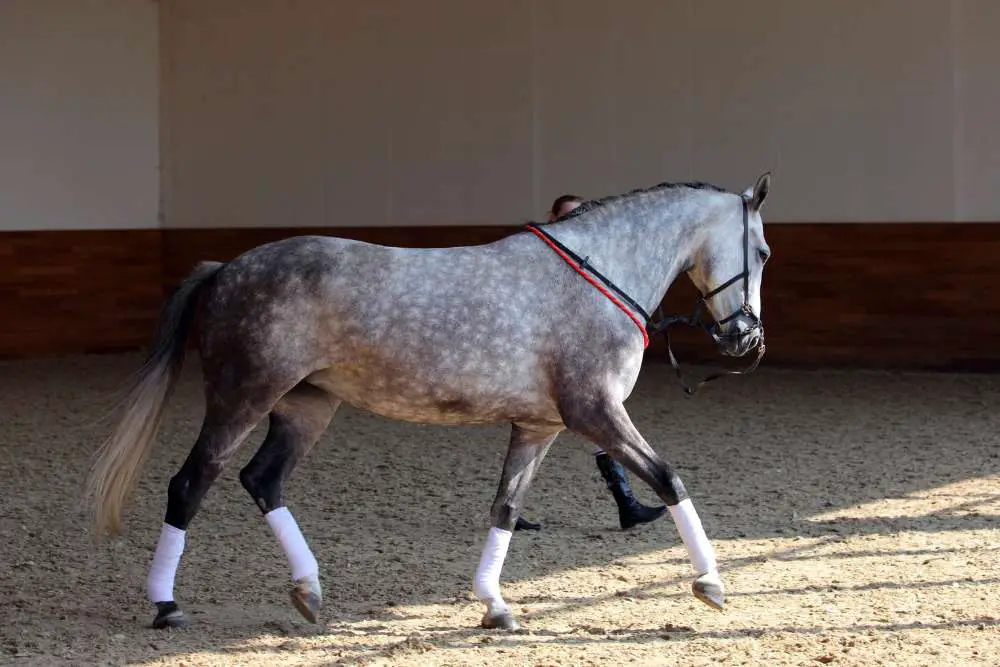
What is a Purebred Spanish Horse (PRE)?
The Purebred Spanish Horse, also known as the PRE, is a noble breed with a rich history as an ancient sports horse in Europe.
It’s closely related to the Lusitano, another purebred breed from Portugal, and both are sometimes referred to as Iberian horses.
Although this breed can compete in various disciplines, it’s particularly renowned for excelling in dressage at an elite level.
The Purebred Spanish Horse can come in any color, but grey and bay are the most common.
If you see the acronym P.R.E., this means PURA RAZA ESPAÑOLA in Spanish and Pure Spanish Horse in English. You may also hear the breed referred to as the CABALLO DE PURA RAZA ESPAÑOLA.
For an Andalusian to qualify as a P.R.E., both parents must:
- have complete identification documents
- be registered in the studbook of the ANCCE
- be licensed
The studbook website lists licensed P.R.E. horses, and their ribbons come in different colors that signify varying levels of breeding quality.
You can confirm if a horse is a P.R.E. by checking its full name in the online studbook.
Even if a horse is not listed in the book, it can still be registered later on.
However, the LG-PRE-ANCCE Stud Book is the only authorized organization that can issue official documentation for P.R.E. horses, ensuring breed purity through DNA confirmation and other controls.
Before being registered in the Stud Book Birth Register every horse undergoes specific identification controls, including:
- DNA parentage determination
- graphic forms completion
- microchip insertion upon birth
Some people use the Purebred Spanish Horse (PRE) and Andalusian Horse interchangeably. However, despite their shared ancestry, there are significant differences between these two breeds.
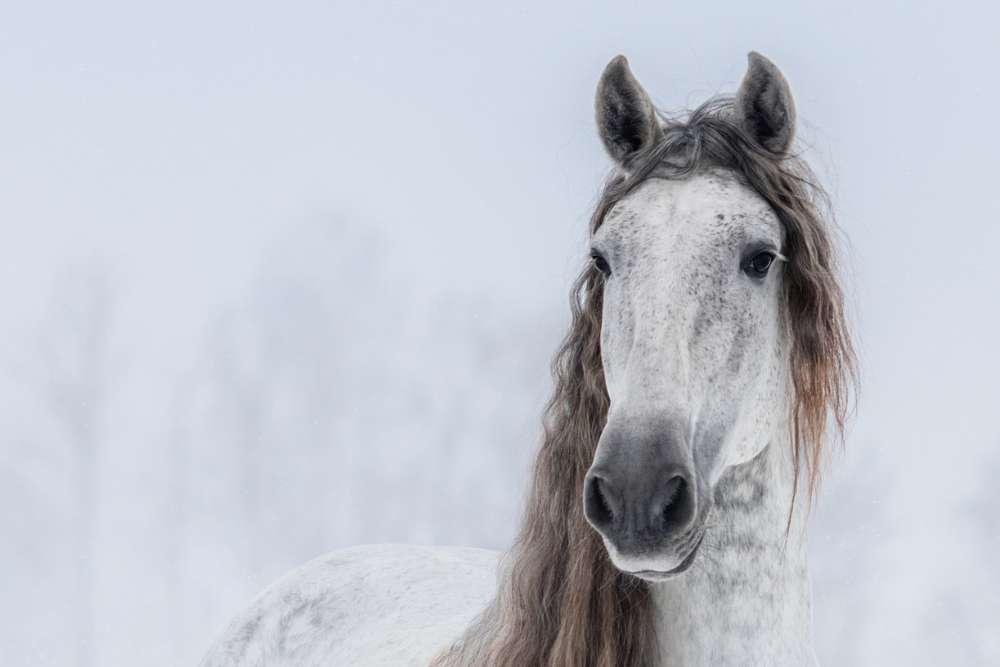
What Is The Difference Between A Purebred Spanish Horse And A Andalusian Horse?
When it comes to Purebred Spanish Horses (P.R.E.) and Andalusian horses, many people tend to group them together as if they are the same breed.
However, there are some notable differences between the two.
| Purebred Spanish Horse (P.R.E.) | Andalusian Horse | |
|---|---|---|
| Studbook | Closed | Open |
| Registration | Must be registered with ANCCE | Not always registered |
| Breeding History | Carefully established breeding programs | Less stringent breeding history |
P.R.E. horses have a closed studbook, which means that they can only breed with other Purebred Spanish Horses. This ensures that their offspring have the same established qualities and characteristics of the breed.
On the other hand, Andalusian horses may have a Spanish pedigree but have at least one parent that is not registered with the Association of Breeders of Purebred Spanish Horses (ANCCE), making them ineligible for registration.
Additionally, the breeding histories of the two breeds differ. The P.R.E. horse has a well-documented history with careful breeding programs established over many centuries, while Andalusian horses have a less stringent breeding history.
Despite these differences, both breeds are admired for their intelligence, athleticism, and beauty, making them a popular choice for equestrian activities like dressage, show jumping, and pleasure riding.
Now that we’ve covered the differences between the P.R.E. and Andalusian horses, let’s take a closer look at the history of the P.R.E. horse.
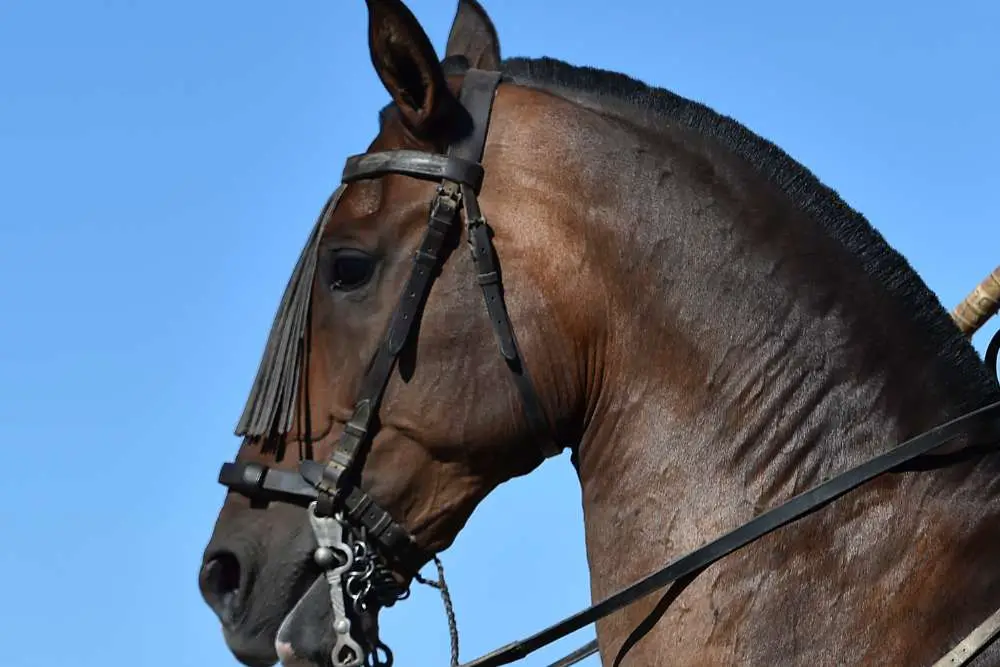
History of the Purebred Spanish Horse (PRE)
The Purebred Spanish Horse (PRE) has a rich history dating back to pre-Roman times, with its ancient roots in the southern region of Spain, where horse breeding has been concentrated for millennia.
The breed’s true origins are uncertain, but it is believed to have evolved from a population of wild horses in the Iberian Peninsula and Northern Africa.
| Timeframe | Short Description |
|---|---|
| Pre-Roman Times | Purebred Spanish Horse has ancient roots in southern region of Spain |
| Roman Empire | Highly valued by Romans for beauty, docility, arrogance, and bravery |
| Golden Age | Favorite of royalty throughout Europe, Spanish monarchs gifted these horses to other countries during this time |
| 16th-17th centuries | European-wide demand for the breed, used to upgrade and establish local breeds, played role in creation of Thoroughbred |
| 19th century | Wars and industrial revolution caused decline in breed’s population |
| Late 19th century | Disappearance of many stud farms contributed to decline of breed’s population |
| Late 20th century | National Stud Farm established and exported horses to Americas, played role in exploration and breeding |
| Late 1960s | Breed reintroduced in UK and spread to over 60 countries worldwide |
| Today | About 170,000 Purebred Spanish Horses worldwide known for fiery and courageous temperament, intelligence, and ability |
The Spanish Horse was highly valued by the Romans, who praised it for its beauty, docility, arrogance, and bravery, making it ideal for war and sports.
The breed was also a favorite of royalty throughout Europe, and Spanish monarchs gifted these horses to other countries during the Golden Age.
In the 16th and 17th centuries, the popularity of the Spanish Horse led to European-wide demand for the breed.
It was used to upgrade and establish local breeds and played an important role in the creation of the Thoroughbred in the 18th century.
However, wars and the industrial revolution caused a decline in the breed’s population, which reduced the number of Purebred Spanish Horses significantly by the 19th century. The disappearance of many stud farms during this time also contributed to this decline.
Fortunately, the breed has since made a comeback. King Philip II organized the equine realm of his kingdom and created the Royal Stables in Cordoba, where the best stallions and mares were gathered.
The Royal Stud Farm became the National Stud Farm and exported many horses to the Americas, playing a decisive role in exploration and breeding.
In the late 1960s, the breed was reintroduced in the UK, and it has since spread to over 60 countries worldwide.
The Purebred Spanish Horse has had a significant impact on other breeds such as the Lipizzaner, Lusitano, Paso Fino, and Central European Warmbloods, all of which owe their ancestry to the PRE.
The Spanish Horse is known for its fiery and courageous temperament, high degree of intelligence, and ability to perform High School maneuvers. It has moved its skills perfected in mounted combat into the riding academies of Europe, making it a true aristocrat of the equine world.
Today, there are about 170,000 Purebred Spanish Horses worldwide, and the breed continues to make strides in the equine industry.
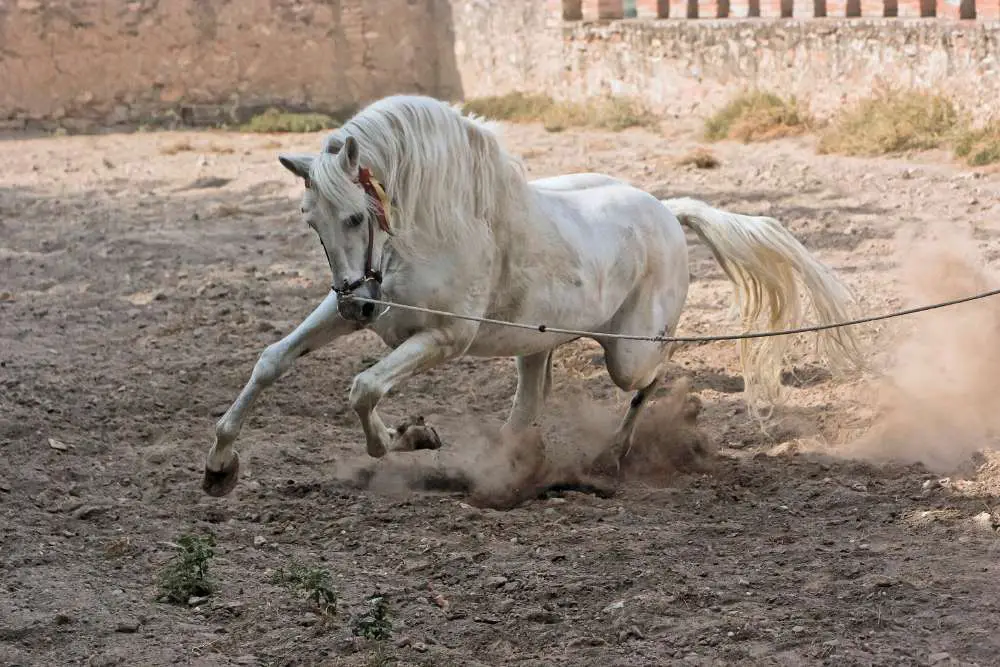
Characteristics of the Purebred Spanish Horse (PRE)
Now that we have explored the rich history of the Purebred Spanish Horse, let’s take a closer look at the characteristics that make this breed so unique and beloved by horse lovers around the world.
| Characteristic | Description |
|---|---|
| Size | Medium-sized |
| Profile | Rounded and sub-convex |
| Neck | High-set with a light arch and often an abundant, silky mane |
| Body | Muscular and robust with broad withers, a powerful back, and a long, muscular, and elastic shoulder, strong humerus, and powerful forearm |
| Hindquarters | Well-muscled |
| Croup | Rounded and slightly sloping with a low-set tail |
| Legs | Long, strong, and thick, with clean hocks |
| Coat | Short and fine; gray and bay are the most common colors |
| Height | Mares: 15-16.3 hands high; Stallions: 15.1-17 hands high |
| Weight | Mares: 900 pounds; Stallions and geldings: 1,100 pounds |
| Temperament | Rustic, sober, and well-balanced |
| Movement | Lively and energetic with excellent cadence and elasticity |
| Collection | Well-known for its collection, mobility, and reactivity to stimuli |
| Versatility | Well-suited for various equestrian disciplines, such as dressage, bullfighting, carriage driving, and livestock work |
| Health | Hardy, healthy, and capable of working hard |
The PRE is a medium-sized horse with unique physical characteristics.
The horse’s profile is rounded and sub-convexIts. The neck is high-set with a light arch and often an abundant, silky mane.
The body is muscular and robust with broad withers, a powerful back, and a forehand with a long, muscular, and elastic shoulder, strong humerus, and powerful forearm.
The hindquarters are well-muscled while the croup is rounded and lightly sloping with a low-set tail. The legs are long, strong, and thick, with clean hocks.
The breed has a short, fine coat, with gray and bay being the most common colors.
The height of the Purebred Spanish Horse can vary. Mares can be 15 to 16.3 hands high (hh), while stallions can range from 15.1hh to 17hh. In Spain, a horse must be at least 15.0 hands (60 inches or 152 cm) for males and 14.3 hands (59 inches or 150 cm) for females to be considered a Purebred Spanish Horse.
The horse’s weight ranges from 900 pounds for mares to 1,100 pounds for stallions and geldings. Its weight is balanced towards the hindquarters for optimal performance, and it is easy and comfortable to ride.
The Purebred Spanish Horse is known for its rustic, sober, and well-balanced temperament. It is a noble and docile horse, with a balanced temperament that can adapt to various uses and situations.
The Purebred Spanish Horse is a lively and energetic horse, with excellent cadence and elasticity in its movements.
It is also known for its collection, mobility, and reactivity to stimuli, which is why it has been a choice horse in the bullfighting ring and can make an excellent jumper.
It is well-suited for various equestrian disciplines, such as dressage, bullfighting, carriage driving, and livestock work.
The breed is hardy, healthy, and capable of working hard, which makes it economical to feed.
Improving the breed of Purebred Spanish Horses requires careful consideration of these physical and behavioral characteristics.
With this in mind, let’s explore some of the steps taken to improve the breed.
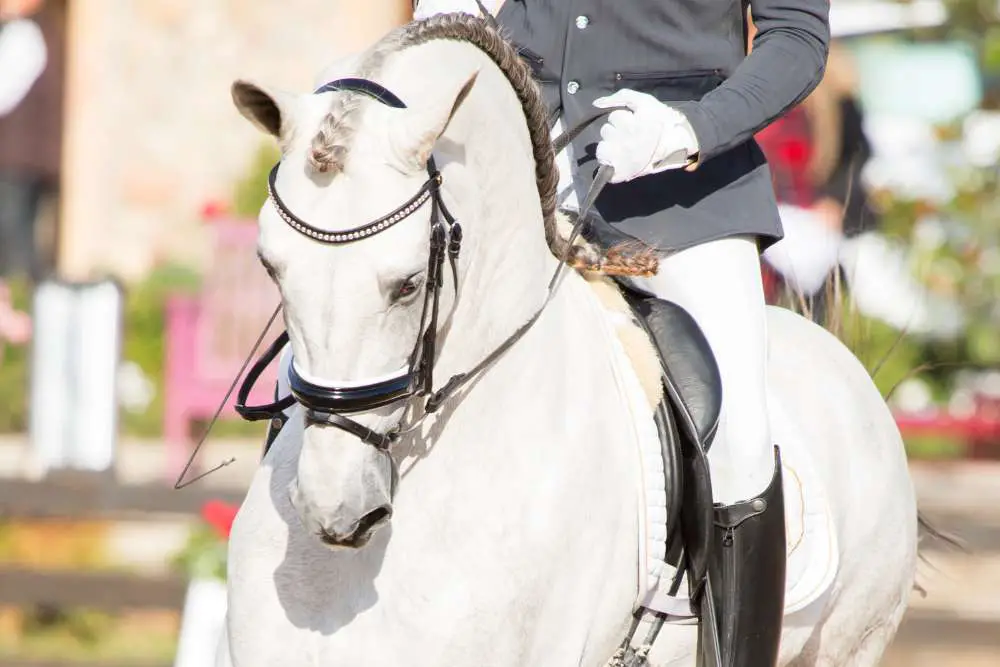
Improving The PRE Horse Breed
Improving the Purebred Spanish Horse breed is a vital aspect of ensuring the quality of the horses for future generations.
This task is primarily conducted by the ANCCE-LGPRE Mother Studbook, which is authorized by the Spanish Government to operate worldwide.
The process of improving the breed involves a Breeding Evaluation at the Basic level (Grading) for mares and stallions aged three years or older.
This evaluation includes inspections for:
- 27 conformation measurements
- breed type
- temperament
- movement at walk, trot, and canter.
The information gathered during the inspection is then used to calculate:
- the global genetic index for conformation with an aptitude for dressage for each horse,
- as well as the likelihood of each conformational attribute being inherited by progeny
Horses between the ages of four and six years old who demonstrate outstanding qualities are awarded the title of ‘Young Recommended Reproducer for Conformation‘ (JRR).
Mares and stallions approved at the Basic level and over five years old can undergo inspection at the Calificado Grading Events, where there is a 40% pass rate.
Additionally, the Young Horse Dressage Series competition series evaluates the dressage ability and genetic qualities of horses between four and six years old.
The top 10% of horses are awarded the status of ‘Young Recommended Reproducer for Dressage‘ (JRR).
Breeding horses that are seven years or older and have attained a reliable genetic index above the herd average are given the Major Recommended (Improving) Reproducer (MRR) title.
Finally, PRE horses with outstanding competition records and progeny with exceptional qualities are awarded the Elite Reproducer Status.
By following these steps, breeders can ensure that the Purebred Spanish Horse breed is continually improving, with exceptional horses being recognized and encouraged to breed.
This process ensures that the breed’s best qualities are passed down to future generations, maintaining the breed’s excellence for years to come.
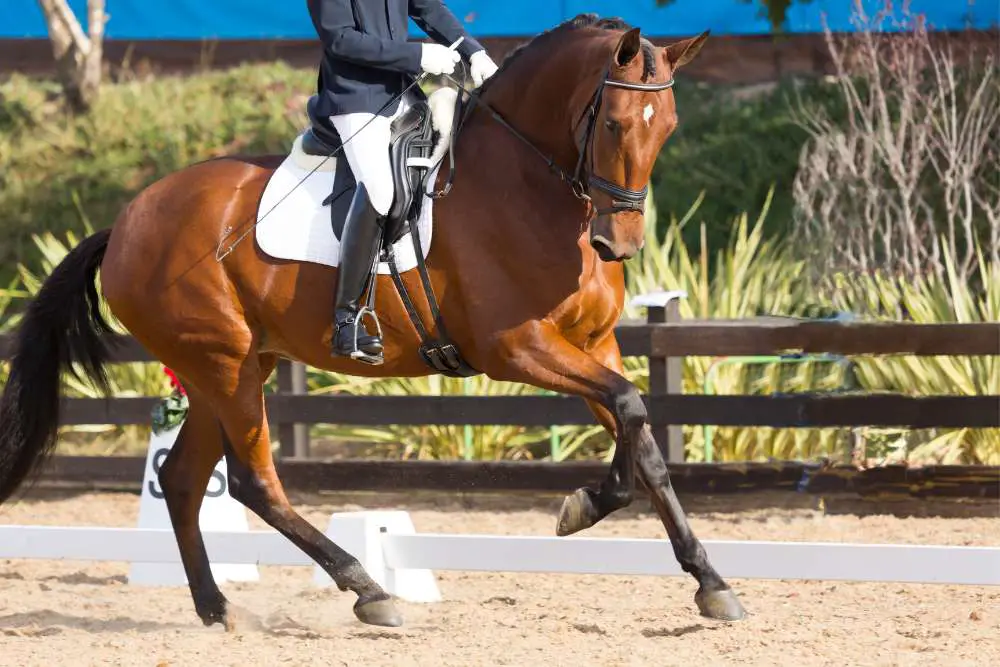
Uses Of The Purebred Spanish Horse
Given the impressive characteristics of the Purebred Spanish Horse, it’s no surprise that the breed is used for a variety of purposes.
They were the ride of choice for kings and have been used for cattle work and bullfighting in their home country of Spain.
Nowadays, the modern PRE is known for its versatility and can be used for a variety of equestrian activities.
- classical dressage
- show jumping
- driving
- bullfighting
- Spanish equestrian events
They’ve played an important role in European history, inspiring classical riding academies, and are still making their mark today in dressage and other disciplines.
The PRE is often used for dressage and can compete in many different events. They’re also well-suited for traditional Spanish equestrian events like bullfighting and the Running of the Bulls, which require lots of skill and precision.
Overall, the Purebred Spanish Horse (PRE) is a talented and versatile breed. From their past as war horses and mounts for royalty to their current uses in dressage, show jumping, and traditional Spanish equestrian events, the PRE is an incredible breed that has so much to offer.
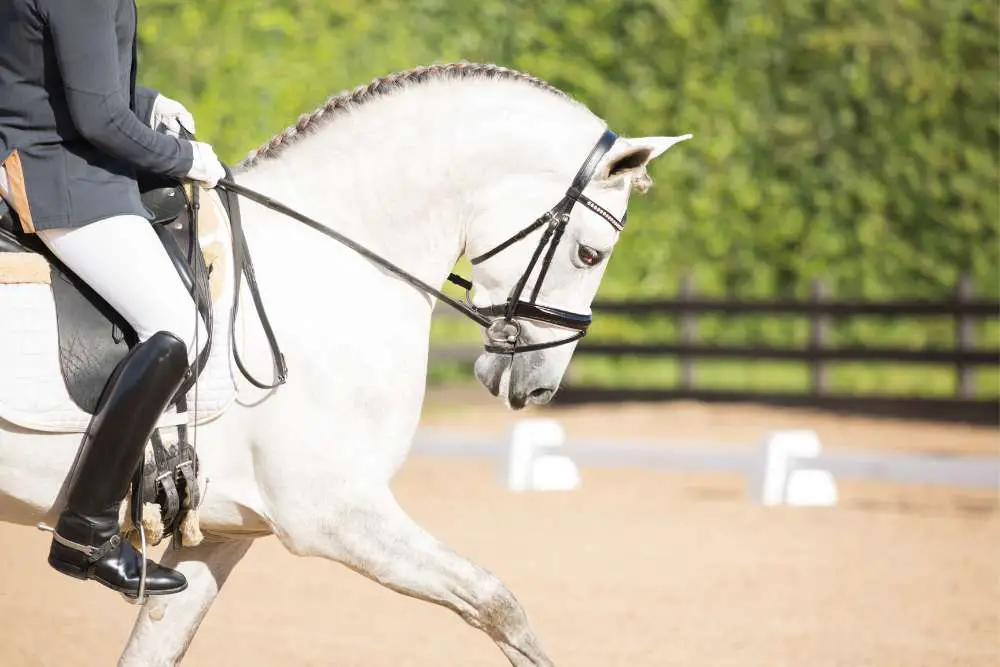
Purebred Spanish Horse In Equestrian Sports
The Purebred Spanish Horse (PRE) isn’t just a talented breed, it’s a superstar in equestrian sports! These magnificent creatures have a rich history of success in dressage and competition carriage driving, and they’ve earned themselves a special place in the hearts of horse lovers worldwide.
Some of the PRE’s most memorable moments have come in dressage, where they’ve taken on the world’s best with breathtaking elegance and grace.
From the Spanish dressage team’s Olympic debut in Atlanta ’96 to the silver medal in Athens 2004, the PRE has been at the forefront of many major competitions.
Who could forget the incredible performances of INVASOR, OLEAJE, and Fuego XII, which helped Spain clinch victory on the global stage?
But the PRE’s talent doesn’t end with dressage. In competition carriage driving, these horses have also made their mark, competing at the highest levels with drivers like Juan Robles and Antonio Carrillo.
So if you’re a fan of equestrian sports, be sure to keep an eye out for the Purebred Spanish Horse (PRE). With their intelligence, strength, and agility, they’re sure to continue wowing audiences and winning hearts for years to come!
FAQ About The Purebred Spanish Horse (PRE)
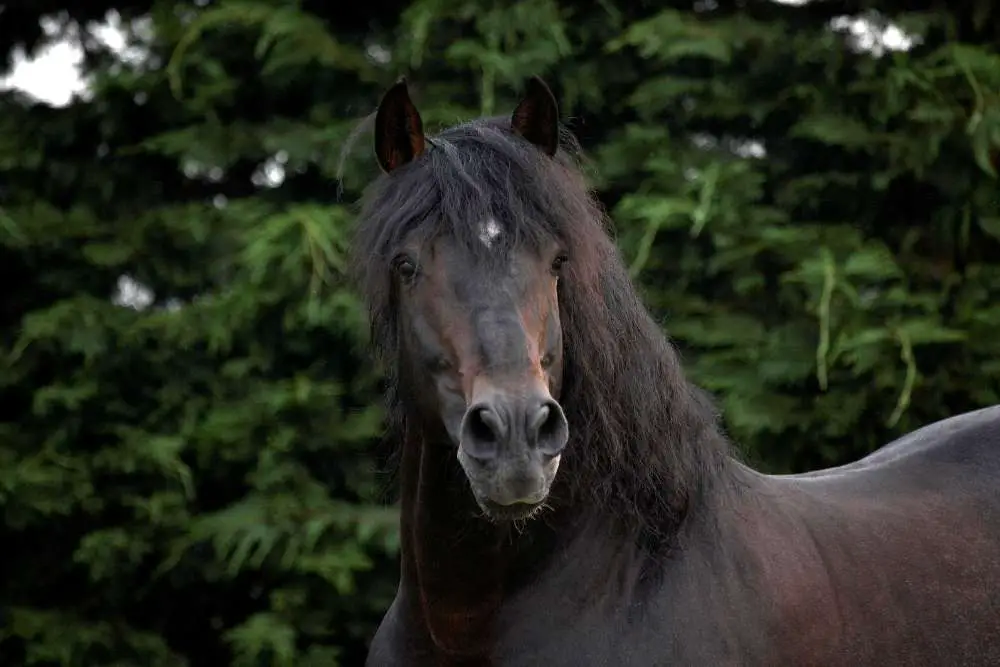
Q: What is the temperament of the Purebred Spanish Horse (PRE)?
A: The PRE is known for its intelligence, sensitivity, and willingness to please. They are typically easy to train and enjoy forming strong bonds with their handlers.
Q: What is the lifespan of the Purebred Spanish Horse (PRE)?
A: The lifespan of the PRE is similar to that of other horse breeds, typically ranging from 25 to 30 years with proper care.
Q: How do I know if a horse is a Purebred Spanish Horse (PRE)?
A: Purebred Spanish Horses can be identified by their physical characteristics, such as their compact, muscular build, long, flowing mane and tail, and distinctive profile. Registration with the Spanish Stud Book (LG-ANCCE) is also a reliable indicator of a horse’s purebred status.
Q: How much do Purebred Spanish Horses typically cost?
A: Prices for Purebred Spanish Horses can vary widely depending on factors such as age, training, and bloodline. On average, you can expect to pay anywhere from $10,000 to $50,000 or more for a quality PRE.
Q: Where can you buy a Purebred Spanish Horse?
A: Purebred Spanish Horses can be purchased from breeders or trainers specializing in the breed. Online marketplaces and classified ads may also offer opportunities to buy and sell PREs.
Q. What are some common health issues that Purebred Spanish Horses may face?
Purebred Spanish (Pura Raza Española – PRE) horses, like any other breed, may face some health issues that you should be aware of if you’re considering owning one.
Here are some of the common health issues to watch out for:
- The equine arteritis virus can have a significant impact on the equine breeding industry in the country.
- Ewe Neck, which is a relatively common morphological defect in PRE horses and other Baroque-type horse breeds.
- Andalusians, which are similar to PRE horses, tend to experience reduced blood flow to the small intestines more often than other breeds, as well as laminitis. So, it’s important to carefully monitor their diet to ensure healthy weight maintenance.
It’s good to know that all PRE horses have DNA samples stored for future analysis. This is helpful for detecting genetic diseases within the breeding population worldwide or for more detailed identification in the future.
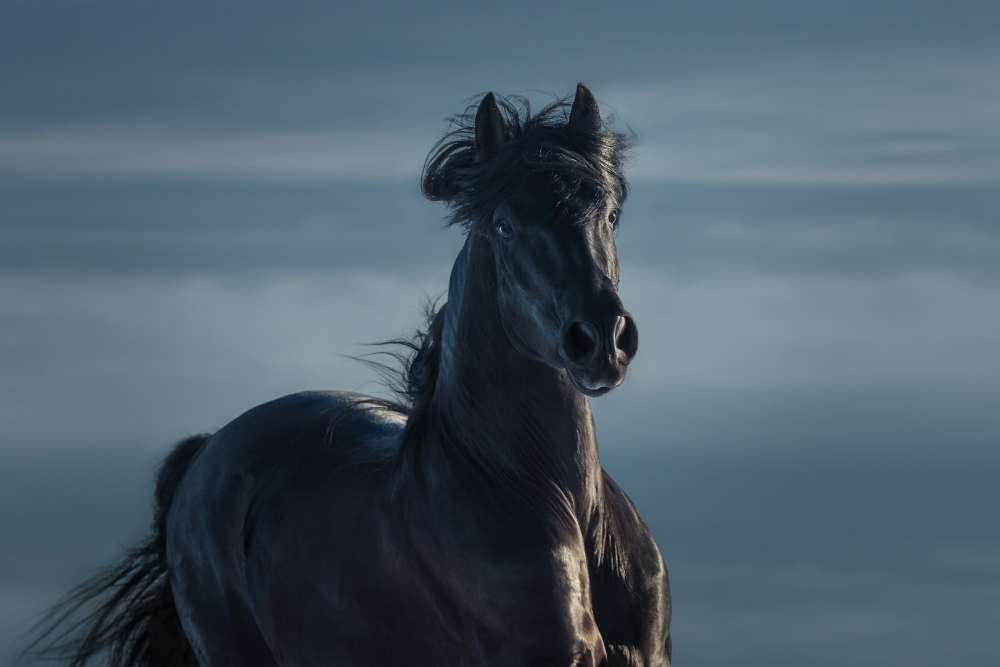
Conclusion
The Purebred Spanish Horse (PRE) is not just a horse, it’s a majestic creature that has caught the hearts of equestrians globally.
With its striking physical features, charming personality, and versatility, it’s no surprise that the PRE is a top pick for many horse enthusiasts.
Whether you’re a seasoned rider or just starting out, if you ever meet a Purebred Spanish Horse (PRE) it will be sure to leave a lasting impression.
In this article, I’ve covered the history, traits, uses, and more of the Purebred Spanish Horse (PRE). From its origins in Spain to its global recognition, the PRE has a captivating and intriguing story.
And why stop at just one breed? Expand your knowledge and explore other horse breeds that may capture your interest and take you on new adventures!
Cheers, Kacey
P.S. Did you like this article? Gallop
over to:

